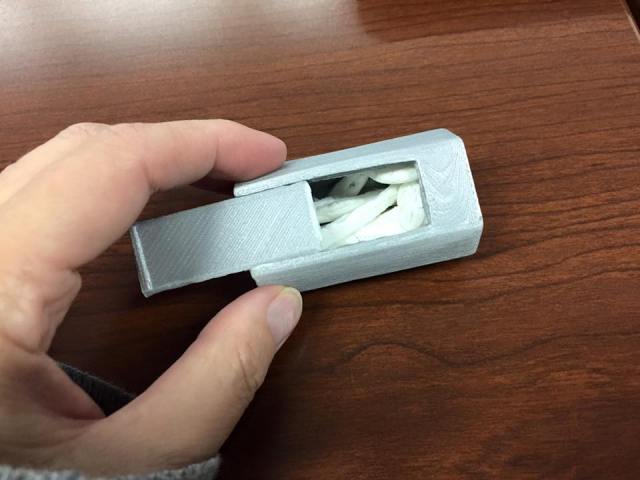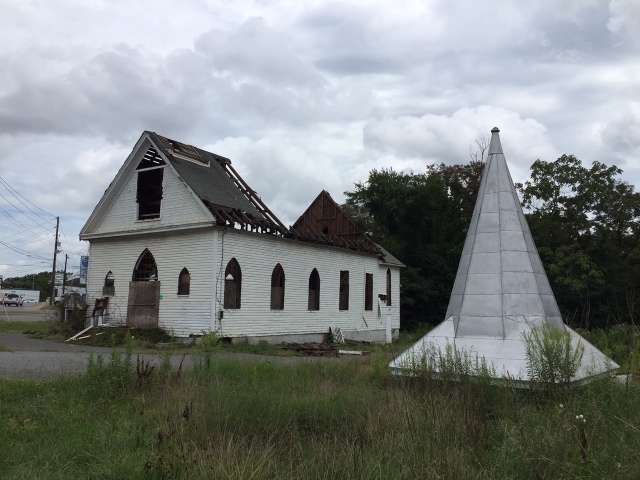Guest blogger Laura Macaluso muses on plastic and the role it may play in preserving and interpreting cultural heritage.
In the past few weeks, I’ve watched the slow dismantling of a 19th century church built mostly of wood and, at the same time, have seen several 3D scanning projects recreate historic objects in plastic. The dichotomy of watching a historic structure slowly disappear piece by piece and an old object coming to life via 3D plastic printing, seems to be a statement about 21st society. In my last blog post I mentioned the growing use of 3D scanning and printers at museums and historic sites to recreate objects in plastic, especially useful in an age of terrorism and the destruction of museum objects and looted archaeological sites. But, I’ve also recently watched a video of a sea turtle having a plastic straw being pulled from its nostrils, blood pouring out, as a woman with pliers tries to free the deeply embedded thing. And, we’ve all seen the image of a dead seagull, whose gut was filled with small plastic pieces from the beach. My stomach turns viewing both. Plastic is not perfect.
But, then on summer vacation my brother—a machinist by trade—told me the story of how NASA is going to send a 3D printer into space, and when astronauts need a specific tool or item, the organization will send a digital file to the space ship, and the astronauts will load and print what they need, thereby saving much needed room, weight and maybe even preventing future disasters (I bet both the astronauts and NASA wished they had had a 3D printer during the Apollo 13 flight—and that they had never used the number 13 to being with!). Further, the recent archeological discovery of a reliquary—a small box to hold relics, or objects imbued with sacred properties—in the coffin of Capt. Gabriel Archer at Jamestown, Virginia became a plastic model that I was able to touch and even open a week after its excavation, thanks to 3D printing technology. Not even Jamestown archaeologists will be able to look inside the real thing—its silver composition is too fragile to force open (but they know what is inside thanks to x-rays).

Photo Laura Macaluso
It seems that plastic does exactly what we want it to do, and as we are discovering with developing technologies, it will do things we haven’t yet dreamed. But, like all technologies, there are downsides that are downright scary. For one thing, plastic has no soul. Watching the church disappear for yet another strip mall type development (Route 221 in Lynchburg/Forest is quickly becoming clogged like the Post Road in the Northeast), it seems easier to sense history in the bones of the framing. Its nave is now exposed to the elements, and I imagine its spirits have left the building, dispersed on the wind. Of course, plastic is as real as 19th-century church timbers, but, it doesn’t age as well. Plastic takes on no patina, and its cracks and jagged edges look worn and dirty, like garbage. It’s hard to repurpose plastic into something else unless we’re talking about full-on recycling. But, plastic is already historic; having been developed in 1907, it has long since passed the official 50-year mark to become part of history, as a building does.
I don’t know who used the church or when, and it may be a strange exercise to think about a wooden church and a plastic recreation of a historic object, but these things exist side-by-side in our world and each plays a part in the human experience.
This post is dedicated to the life and work of Khaled al-Asaad, a Syrian archaeologist tortured and beheaded by ISIS (Islamic State) on August 18, 2015.
Further Reading:
Adrienne Lafrance, “A Skeleton, a Catholic Relic, and a Mystery about American Origins,” The Atlantic, July 28, 2015 .
For views of more objects recreated in plastic via 3D scanning and printing, see the Virtual Curation Museum.
Laura A. Macaluso is a Ph.D. candidate in the Humanities at Salve Regina University in Newport, RI. She is currently completing a book about the Portrait of Cinque/Sengbe, a painting from 1840 which depicts the leader of the Amistad mutiny, one of the few successful slave revolts in western history (AASLH/Rowman & Littlefield). She was a Fulbright Scholar to Swaziland in 2008-2010 and enjoys learning and writing about cultural heritage from across the globe.

